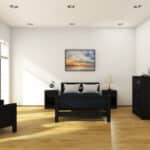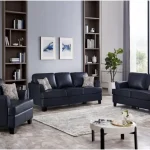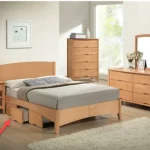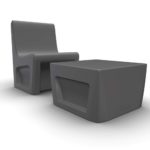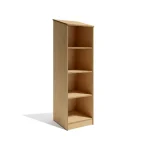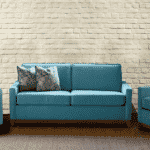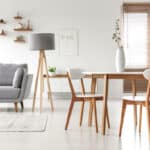3-Minute Ligature-Resistant Furniture Guide: What Every Administrator Needs to Ask
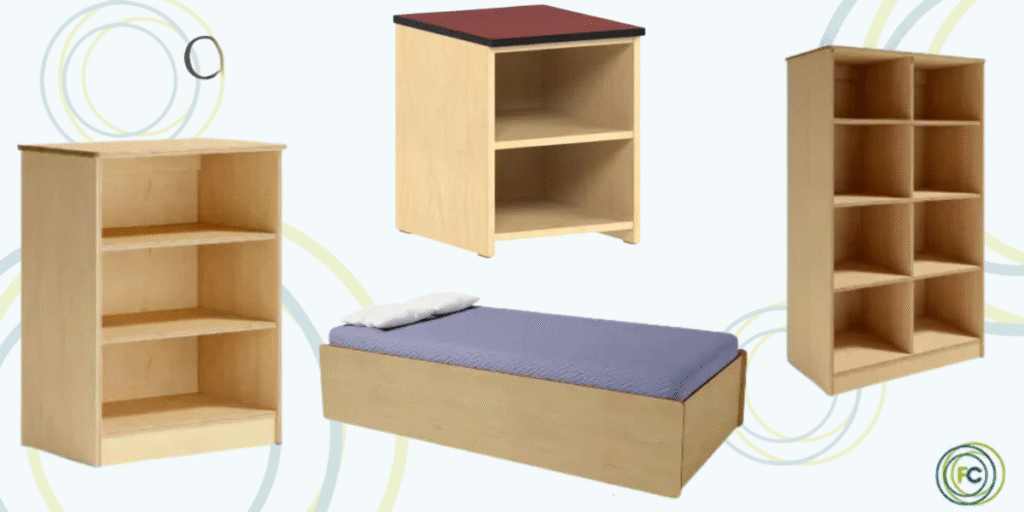
Selecting ligature-resistant furniture is one of the most critical safety measures for behavioral health and correctional facilities. These environments require thoughtful design choices that protect residents while supporting dignity and comfort. Administrators often face the challenge of balancing safety with creating a welcoming atmosphere, which can feel overwhelming when reviewing countless options.
This guide gives administrators a concise framework to evaluate behavioral health furniture and mental health facility furniture quickly and confidently. By asking the right questions, decision-making becomes much simpler, helping facilities choose ligature-resistant beds, seating, and storage solutions that align with both safety standards and resident needs.
Understanding Ligature-Resistant Furniture
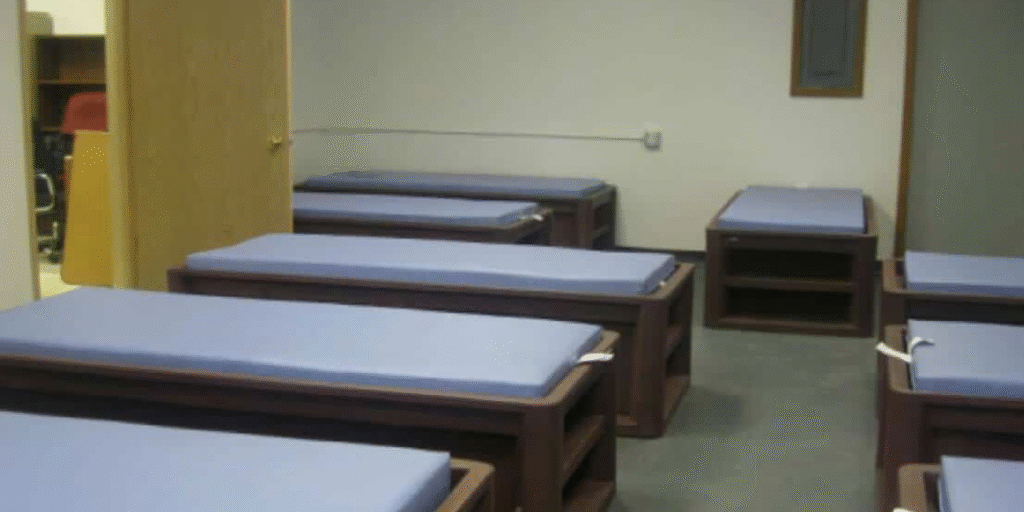
Choosing the right ligature-resistant furniture requires a clear understanding of what it is and why it matters. These furnishings are designed specifically to minimize opportunities for self-harm, making them essential in environments where resident safety is paramount. Beyond safety, they also contribute to creating supportive and functional spaces that balance the needs of both staff and residents.
Core Features of Behavioral Health Furniture
The defining characteristics of behavioral health furniture include intentional design features that reduce risk without sacrificing usability. For example:
- Rounded or Sloped Surfaces: These features are intended to remove sharp corners, reducing the chance of accidents and encouraging safer interactions. Every curve or slope serves a practical function while maintaining a clean and simple appearance.
- Enclosed Bases and Minimal Gaps: Bases that are fully enclosed and designs with very few gaps limit the opportunity for ligature points. This approach also makes placement easier and contributes to straightforward room layouts that staff can manage effectively.
- Reinforced Frames and Durable Materials: Furniture constructed with reinforced frames and robust materials can handle heavy use, tampering, and frequent movement. These qualities help the pieces preserve their integrity under pressure and extend their service life even in demanding environments.
Examples of such products include ligature-resistant beds, chairs, storage units, and tables that can handle daily use in secure environments. These features ensure that mental health facility furniture provides long-lasting functionality while keeping safety at the forefront. Highlighting the benefits of ligature-resistant furniture, these qualities show why careful design and construction matter in every setting.
Applications Across Facilities
The applications of ligature-resistant furniture vary depending on the type of facility. A residential care home may need softer, home-like pieces, while correctional environments require robust, tamper-proof solutions. Outpatient clinics, group homes, and therapeutic centers each benefit from tailored solutions:
- Bedrooms: Secure, stable ligature-resistant beds are essential for these spaces, and anchoring options provide added assurance. The furniture chosen here should withstand daily use while aligning with the unique needs of private living quarters.
- Common Areas: Seating in these rooms must remain durable under constant use, with tamper-resistant qualities that prevent misuse. At the same time, the pieces should support group interactions and encourage a sense of community.
- Waiting Rooms: Mental health facility furniture in these spaces should be welcoming and approachable, helping reduce stress for residents or visitors. Non-institutional styles combined with safe construction make these areas feel balanced and supportive.
By aligning furniture choices with room type and facility purpose, administrators can create balanced, functional environments.
Key Questions Administrators Should Ask
When selecting ligature-resistant furniture, asking the right questions helps administrators identify the best options for their facility. Each question focuses on safety, resident experience, and long-term functionality.
Functionality and Design Considerations
Safety begins with smart design. Administrators should evaluate:
- Ligature Point Minimization: Rounded surfaces, enclosed sides, and minimal gaps play a central role in preventing hazards. Each of these details contributes to reducing risks and helps ensure that furniture supports daily use without unnecessary complications.
- Construction and Durability: Reinforced frames, tamper-resistant hardware, and high-quality materials provide consistent reliability. These elements allow the furniture to handle frequent use while maintaining its condition and usefulness over time.
- Anchoring and Stability: Especially for ligature-resistant beds, anchoring methods and overall stability are vital to avoid misuse. Strong, well-secured pieces remain dependable under stress and continue to perform effectively.
- Concealment Prevention: Designs that limit hidden spaces discourage the storage of contraband. This feature promotes a safer environment and reduces the challenges staff may face during inspections or routine monitoring.
These considerations ensure that mental health facility furniture meets safety standards while providing consistent durability.
Environment and Resident Experience

While safety is the priority, the environment should not feel overly clinical. Effective behavioral health furniture contributes to a supportive atmosphere. Important factors include:
- Comfort: Upholstery, cushioning, and fabrics should be selected to balance ease of use with practical performance. These elements not only provide a supportive experience but also ensure the furniture aligns with facility standards and long-term functionality.
- Variety: Furniture needs to be adapted for spaces such as waiting rooms, bedrooms, and therapy areas, each with distinct requirements. A diverse selection ensures that every area can be furnished appropriately while supporting the overall goals of the program.
- Welcoming Design: Pieces that avoid a rigid institutional appearance help create a calmer atmosphere for residents and visitors. This design approach can reduce anxiety and contribute to spaces that feel more positive and approachable.
Integrating ligature-resistant furniture with thoughtful design choices helps create spaces that promote healing while maintaining safety.
Maintenance and Compliance
Ease of maintenance is crucial in high-use facilities. Ligature-resistant furniture should feature:
- Easy-to-Clean Surfaces: Seamless surfaces that can be quickly wiped down and disinfected are vital in busy environments. This feature allows staff to maintain hygiene standards consistently without spending extra time on maintenance.
- Durable Materials: Healthcare-grade materials that resist wear, staining, and daily impact are essential for long-term performance. These materials help facilities reduce replacement cycles while keeping furniture in presentable condition.
- Regulatory Compliance: Adherence to Joint Commission guidelines and other standards ensures that furniture selections support accreditation. Meeting these requirements gives administrators confidence that their investment aligns with industry expectations.
Facilities should also request documentation or case studies showing how specific mental health facility furniture, including ligature-resistant beds, has performed in similar environments.
Vendor and Ongoing Support
Choosing the right vendor is as important as selecting the right product. Administrators should assess:
- Reputation and Experience: The vendor’s background in behavioral health furniture demonstrates reliability and proven success. Evaluating past projects or client feedback can provide insight into how well their products perform in real settings.
- Support Services: Available assistance, such as consultation, installation, and maintenance, plays a key role in long-term satisfaction. Administrators benefit from ongoing guidance that simplifies both setup and continued use of the furniture.
- Warranty and Reliability: Warranty coverage and consistent dependability ensure peace of mind for administrators. Strong warranty terms signal that the vendor stands behind the durability and value of their furniture over time.
A trusted vendor helps ensure that ligature-resistant beds and other furnishings remain effective long after installation.
Quick Tips for Evaluating Options
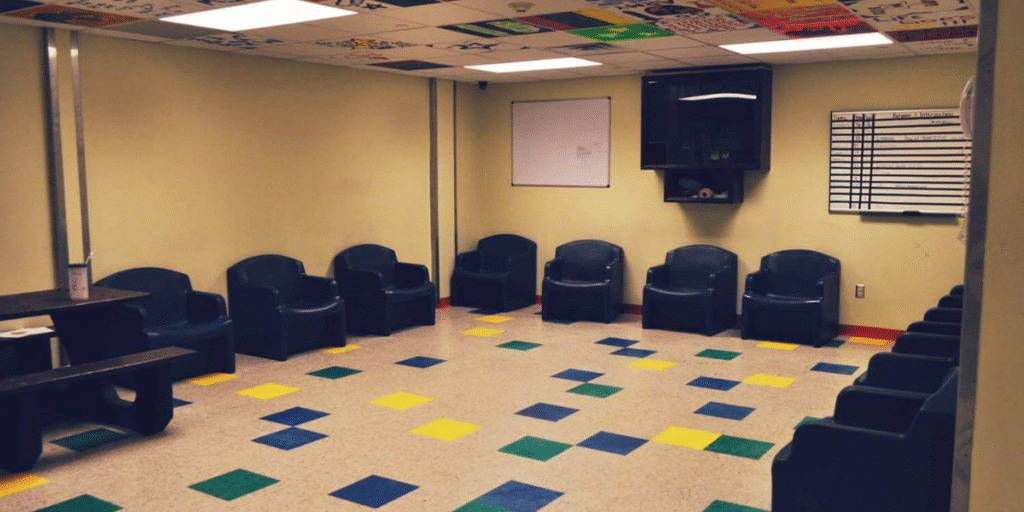
Administrators often need to make decisions quickly. A streamlined evaluation process can make the difference:
- Checklists for Comparison: Structured tools make it easier to compare products side by side. They allow administrators to identify differences in design, durability, and usability, ensuring no important detail is overlooked.
- Daily Usability Feedback: Consulting staff and caregivers who interact with the furniture every day provides practical insights. Their experiences highlight potential challenges or benefits that may not be obvious during initial evaluations.
- Focus on Durability: Selecting pieces with proven longevity reduces replacement costs and maintenance issues. Long-lasting furniture supports consistent use and delivers better value over time.
- Consider Resident Comfort: Ensuring that furniture contributes positively to the resident experience creates a more welcoming atmosphere. Comfort encourages engagement with the space and helps residents feel more at ease.
By applying these strategies, administrators can choose ligature-resistant furniture that balances safety, durability, and comfort. When selecting furniture for behavioral health, these simple practices help ensure that decisions support both residents and staff in meaningful ways. This approach ensures the long-term value of investments in behavioral health furniture.
Furniture Concepts: How We Support Your Facility
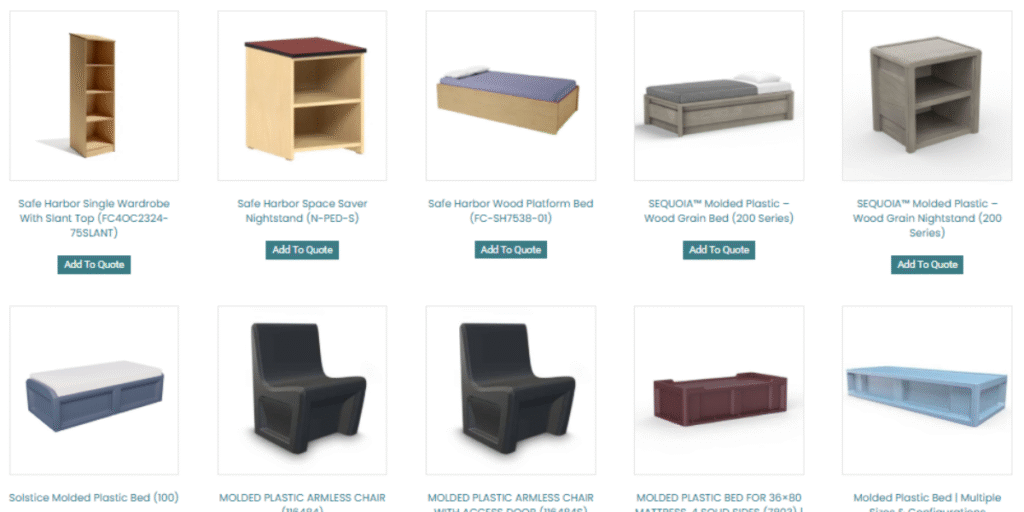
At Furniture Concepts, we truly get the distinct needs of behavioral health and human service spaces, where every choice contributes to creating environments that feel welcoming and purposeful. Our approach emphasizes style, durability, and hygiene so that each setting remains functional while supporting the people who use it every day.
We provide a wide range of options that adapt to the requirements of different rooms and populations. From ligature-resistant beds to versatile seating and secure storage, our selection ensures that facilities can furnish every area with solutions that match the specific goals of each space.
Our team works closely with administrators to align each choice with long-term program objectives. Through collaboration, we help ensure that decisions about behavioral health furniture are practical, efficient, and supportive of organizational goals.
From consultation through delivery, our process is structured to be smooth and dependable. Our mission is to assist you in transforming your environments into reflections of care, dignity, and a focus on creating meaningful experiences.
Conclusion
Selecting the right ligature-resistant furniture is essential for building safe and supportive behavioral health and correctional environments. This guide explained the qualities that define ligature-resistant furniture, the features that set behavioral health furniture apart, and how these pieces apply in different types of facilities. It also highlighted the questions administrators should ask when considering design, usability, compliance, and vendor support. Practical tips for evaluating options and an overview of how Furniture Concepts supports facilities rounded out the discussion.
In short, choosing the right mental health facility furniture, including durable ligature-resistant beds, allows administrators to meet regulatory standards while enhancing the daily experience for residents and staff. Using the insights provided here, administrators can move forward with confidence, knowing their decisions promote safety, dignity, and long-term value.
Ready to upgrade your facility? Contact Furniture Concepts today to explore ligature-resistant solutions tailored to your needs.

